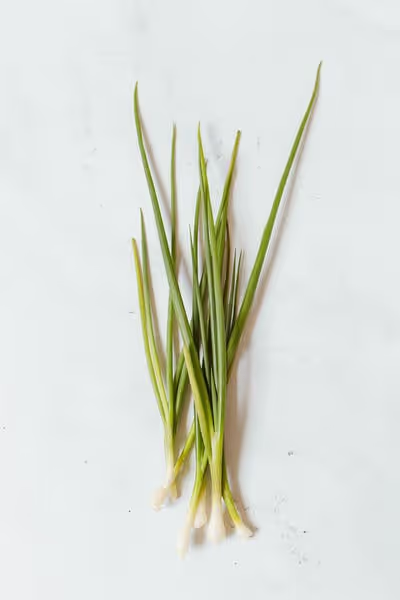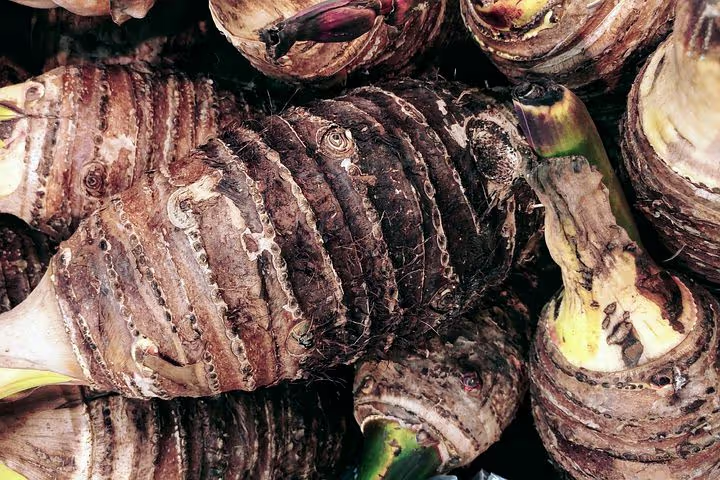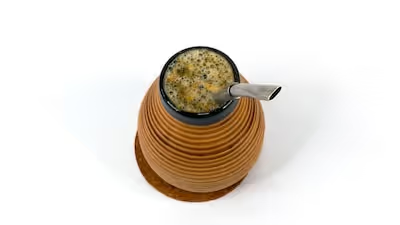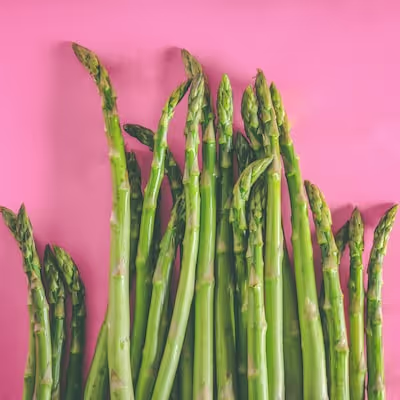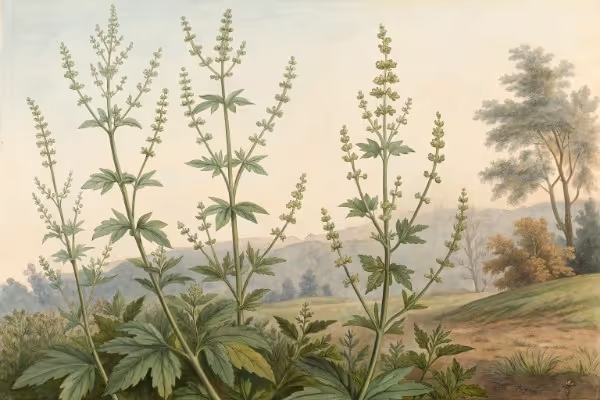Growing Duck Potato: A Gardener's Guide to Water Gardens
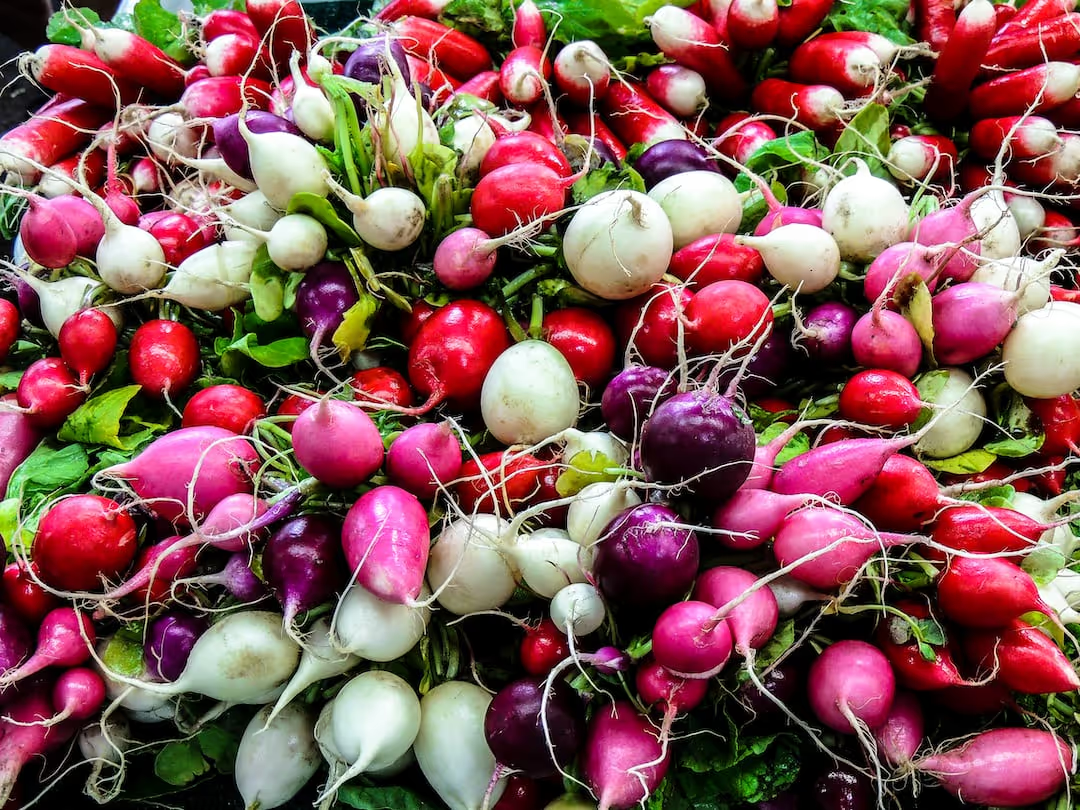
Growing Duck Potato
Growing duck potato puts a delicious, wild edible right in your backyard pond or marshy garden bed. Hardy and fast-growing, duck potato (also called Sagittaria latifolia) thrives in shallow water and muddy soil, providing arrow-shaped foliage and nutritious, potato-like tubers. Follow these simple, practical steps for growing duck potato and soon you'll harvest tasty tubers while attracting local wildlife—curious yet?
Cheatsheet: Fast-Track Duck Potato Growing
🌱 Site Selection & Prep
- Full sun, shallow water (2–12in / 5–30cm deep)
- pH 6.5–7.5, rich loam or clay mud
- Remove weeds and debris
- Flood container or pond prior to planting
🦆 Planting Steps
- Use dormant tubers or seeds (tubers yield faster crops)
- Press tubers 1–2in (2.5–5cm) deep in mud, spaced 12in (30cm) apart
- Keep submerged; cover with 2–4in (5–10cm) water
- Thin seedlings if direct-sowing seed
💧 Maintenance
- Maintain water levels: 2–12in (5–30cm) above soil
- Top-dress with compost every 4 weeks
- Remove aggressive competitors: cattail, smartweed
- Inspect for leaf miners & snails; handpick pests
🌾 Harvest
- Wait for foliage dieback (120–150 days)
- Pull or rake tubers from mud
- Wash and cure in shade 2–3 days
📦 Tools and Products You'll Need
- Rubber boots
- Garden rake or digging fork
- Duck potato tubers or seeds
- Large containers, lined pond, or shallow water margin
- Compost or well-rotted manure
🍴 Eat & Store
- High in potassium, fiber, vitamin C
- Use like potatoes: boil, roast, bake
- Store fresh tubers in cool, moist sand up to 4 months
🌍 Self-Sufficiency
- Duck potato (Sagittaria latifolia) tolerates flooding, boosts food resilience
- Attracts pollinators, ducks, and beneficial insects
- Each plant may yield 3–7 lbs (1.4–3.2 kg) of tubers
-
Growing Duck Potato: A Gardener’s Guide to Water Gardens
I grow Growing Duck Potato for three reasons, it looks bold, feeds wildlife, and shrugs off neglect once established.
If you keep a pond, bog, or half-barrel, this plant pays rent.
Meet the plant: Sagittaria latifolia
Also called broadleaf arrowhead or wapato, it is a native emergent with arrow-shaped leaves and crisp white tri-petaled flowers.
Stems rise 1 to 3 feet tall, tubers form in mud, and the plant spreads by rhizomes that thicken fast in warm water.
Set crowns so they sit under 4 to 12 inches of water, 10 to 30 cm keeps stems sturdy and the leaf blades broad.
It is hardy across much of North America and handles freeze-thaw if its crown stays wet under ice.
I give it full sun for best flowering, partial shade still works but growth loosens.
Site and water depth
- Target 6 to 8 hours of sun, morning sun reduces leaf scorch in hot summers.
- Best in 4 to 12 inches of water above the soil surface, 10 to 30 cm suits containers and shelf edges.
- Shelter from strong water currents that uproot new plantings.
Containers vs in-ground shelves
- Containers: control spread, simplify fertilizer, and let you sink below the ice line in winter.
- In-ground shelf: clean lines and natural look, but runners can wander into liner seams or clog skimmers.
Planting technique that works
- Use a heavy loam with some clay, avoid fluffy mixes with peat or perlite that float.
- Choose a mesh aquatic basket 10 to 15 inches wide, 25 to 38 cm gives tubers space.
- Set the crown level with the soil, topdress with 1 inch of pea gravel to stop koi and raccoons from digging.
- Lower slowly into the pond so soil does not plume, finish with 6 to 12 inches of water over the crown.
Climate notes
I grow it reliably in USDA zones 3 to 10, heat-tolerant in humid summers if water stays fresh and oxygenated.
In dry climates, add aeration or a small spill to keep water moving and sweet.
Feeding for pushy growth
Press slow-release aquatic tablets around the basket rim every 4 to 6 weeks from late spring through late summer.
Look for pond-safe formulations near 10-14-8, higher nitrogen pushes leaf mass in early season, then taper to favor flowering.
Maintenance
Trim yellowing leaves at the base to prevent rot smells, deadhead spent flowers if you want fewer seedlings.
Thin runners after peak bloom to keep a strong clump and clear pump intakes.
Propagation
- Tubers: lift in late summer or early fall, detach firm tubers and replant 2 to 3 inches deep, 5 to 8 cm.
- Division: cut a chunk of crown with roots in spring when growth starts, replant immediately.
- Seed: viable and easy, cold stratify 60 to 90 days in the fridge then sow shallow in trays kept wet.
Wildlife value
Ducks, rails, and muskrats relish seeds and tubers, bees hit the flowers before noon.
I have watched dragonflies hunt from the leaf tips like trapeze artists, clean pond margins start to feel alive.
Native emergent stands can boost waterfowl use of a small pond within a season, I see visits double once flowers show.
Missouri Botanical Garden, the Lady Bird Johnson Wildflower Center, and USDA NRCS all profile Sagittaria latifolia as a dependable native for shallow water with high wildlife value.
Those references match field results I see in client ponds and on restoration sites.
Edible tubers, handled smartly
The starchy tubers were traditional fare across parts of North America, I cook them like small potatoes after scrubbing and peeling post-boil.
Only harvest from clean, legal waters and confirm identification with regional floras or extension guides before any tasting.
Overwintering
- Cold regions: sink baskets below the ice line, 18 to 24 inches deep, 45 to 60 cm, and leave them wet.
- Freeze-thaw on dry crowns kills them, wet and dark storage is safe insurance.
- Warm regions: thin clumps in late winter to reset vigor before spring surge.
Troubleshooting
- Yellow leaves in midsummer: increase sun or feeding, and check water depth is not over 18 inches, 45 cm.
- Shredded foliage: koi or turtles are chewing, add a rock collar or plant behind a coarse mesh guard.
- Aphids: rinse with a hose or release lacewings, avoid oil sprays in full sun on aquatic leaves.
- Rotting crowns: stale water and too deep planting, raise the basket and improve circulation.
Buying guide for Growing Duck Potato
- Form: tubers ship best in spring, bare-root crowns plant well from late spring through early summer.
- Quality: pick firm tubers without soft spots, crowns should show white root nubs, avoid dry or mushy stock.
- Containers: grab 2 to 3 aquatic baskets per 100 square feet of shoreline, it fills fast but looks cleaner in modules.
- Soil and media: heavy loam, plus pea gravel cap, skip bagged topsoil with bark fines.
- Fertilizer: pond-safe tablets only, broadcast lawn fertilizer fouls water and invites algae.
- Vendors: native plant nurseries and pond specialists offer the best provenance and disease-free material.
Pairings and alternatives
- Pickerelweed, Pontederia cordata: violet flowers, same shelf depth, blooms for months with tablets.
- Arrow arum, Peltandra virginica: glossy foliage and deep shade tolerance, slower spread.
- Lizard’s tail, Saururus cernuus: fragrant white spikes, strong clump in part shade.
- Golden club, Orontium aquaticum: gold spadix and blue-green leaves, loves cool moving water.
- Sweet flag, Acorus americanus: vertical texture and citrusy scent when bruised, great edging.
Design notes I return to
Stage Sagittaria in odd-numbered clumps, then flank with a lower carpet like water mint to hide pot rims.
Use a dark liner or black barrels, the white flowers pop against reflections and draw bees like a bakery case draws night-shift cooks.
Field notes from a muddy pair of boots
My fastest fill was a half-barrel on a stoop, one tuber in April turned into a rinse-and-repeat tuber harvest by September with a single tablet per month.
On a two acre wildlife pond, I caged first-year clumps with welded wire, by year two the cages came off and red-winged blackbirds took over quality control.
Quick calendar for Growing Duck Potato
- March to April: set crowns in cool zones, stratify seed in trays indoors.
- May to June: plant tubers outside, start fertilizer tablets after new leaves harden.
- July to August: thin runners, deadhead if you want fewer volunteers, harvest edible tubers late.
- September to October: divide and replant, sink baskets for winter in cold zones.
- November to February: leave crowns wet and quiet, service pumps and clean intakes.
Regulatory and ecological notes
Sagittaria latifolia is native in many regions, some other Sagittaria species are restricted where they escape cultivation, always check local listings before ordering.
Source references worth reading include USDA NRCS Plant Profile for Sagittaria latifolia, Missouri Botanical Garden plant page, the Lady Bird Johnson Wildflower Center database, and regional extension bulletins on native aquatic plantings.
FAQ
How deep is too deep for Growing Duck Potato?
Keep water 4 to 12 inches over the crown, growth weakens beyond 18 inches, 45 cm.
Will it take over my pond?
In rich water it spreads, use baskets to confine and thin yearly after flowering.
Can I grow it in a patio barrel?
Yes, one 10 to 12 inch basket inside a whiskey barrel looks tidy and flowers well with monthly tablets.
How fast until flowers?
Tubers usually flower the first season, seed-grown plants flower in year two.
Is it safe with fish?
Yes, though koi may nibble new shoots, a gravel cap and short fence protect starts until stems toughen.
Frequently Asked Questions About Growing Duck Potato
What type of soil works best for duck potato cultivation?
Duck potato thrives in wet, marshy soils or shallow water up to about 12 inches (30 cm) deep. Ideally, use rich loamy soil mixed with organic matter to ensure reliable moisture retention and nutrients for healthy growth.
How much sunlight should duck potato receive daily?
To achieve vigorous growth, your plants require full sun, which means at least 6 to 8 hours of direct sunlight daily. While they survive partial shade, strong sunlight supports more abundant tuber production and healthier foliage.
When is the ideal planting time for duck potato?
Begin planting in early spring once the risk of frost no longer threatens. Soil and water temperatures should consistently remain above 55°F (13°C) to encourage proper tuber germination and vigorous early growth.
How deep should I plant duck potato tubers?
Place your tubers approximately 2 to 4 inches (5 to 10 cm) below the soil surface. If planting in shallow water, position the tubers gently so that they settle firmly into the soil substrate without floating to the surface.
What watering practices promote optimal duck potato growth?
Maintain consistently saturated or flooded soil conditions throughout the growing season. Water depth can range from soil saturation up to around 12 inches (30 cm). Avoid letting the planting area dry out, as duck potato plants depend on persistent moisture to flourish.
Are fertilizers necessary for healthy duck potato growth?
While Duck potato typically grows well in nutrient-rich wetlands, supplemental fertilizing may encourage greater productivity. Add an organic slow-release fertilizer—such as compost or aged manure—at planting time for sustained nutrient supply through the growing season.
When and how do I harvest duck potato tubers?
Harvest the tubers in late fall when the plant foliage begins to fade, typically about five to six months after planting. Gently lift the plants and sift carefully through the soil or shallow water to uncover and collect mature tubers. Rinse harvested tubers thoroughly to remove residual soil and debris before consuming or replanting.
Can duck potato plants overwinter in colder climates?
Yes, duck potato plants naturally tolerate colder climates and overwinter successfully in USDA Zones 3–10. Tubers remain dormant below the freeze line, emerging in the spring when temperatures rise above 55°F (13°C). Mulching lightly around the planting area adds extra winter protection in colder regions.
Are duck potato plants susceptible to pests or diseases?
Duck potatoes demonstrate resilience against most common garden pests and diseases. However, monitor for aphids and slugs occasionally. Remove affected foliage manually or rinse pests away with a gentle jet of water. Maintaining consistently wet conditions reduces susceptibility to fungal diseases.
Growing duck potato rewards any water garden with more than beauty. This native plant stands tall, offering habitat for wildlife and a taste of wild food for the adventurous. Keep its roots wet, give it sunlight, and it’ll handle the rest—no coddling required. If you’re drawn to other water-loving plants, exploring how to grow cattails might round out your aquatic patch perfectly. Adding duck potato is about working with nature, letting the pond edge thrive with little fuss and plenty of reward.
The Prepper's Guide to Duck Potato: Survival and Self-Sufficiency
Nutritional Benefits for Sustaining Health
- Caloric Source: Duck potato tubers offer roughly 95 calories per 100g (3.5 oz).
- Essential Nutrients: Good source of starch, fiber, protein, potassium, phosphorus, and vitamins (A, C, and B-complex).
- Medicinal Potential: Traditional use as an anti-inflammatory poultice for minor wounds and insect bites.
Long-Term Food Security Advantages
- High Yielding: One mature plant can yield up to 40 tubers, each averaging 2.5-5 cm (1-2 inches) in diameter.
- Minimal Maintenance: Perennial habit ensures continuous annual harvests with minimal effort.
- Easy Preservation: Tubers can dry and store effectively for months in cool, dark storage; dried tubers provide stable caloric reserves.
Enhanced Ecosystem Stability
- Water Purification: Dense roots remove excess nitrates, phosphates, and pollutants from freshwater ponds.
- Creating Wildlife Habitat: Provides shelter and food source attracting waterfowl, fish, amphibians—boosting biodiversity and natural pest control.
- Water Conservation: Thrives in standing pools or marshy ground; supports sustainable water management practices.
Practical Survival Planting Tips
- Optimal Site: Select shallow freshwater bodies, depths around 15-50 cm (6-20 inches), with rich sediment.
- Durable Propagation: Plant dormant tubers in early spring; crop matures within 4-6 months.
- Emergency Harvesting: Collect tubers after foliage dies back in autumn; leave smaller tubers behind for next season's yield.
Find out which plants will thrive in your garden!
Answer a few fun questions and get custom plant recommendations perfect for your space. Let’s grow something amazing together!

start your season
